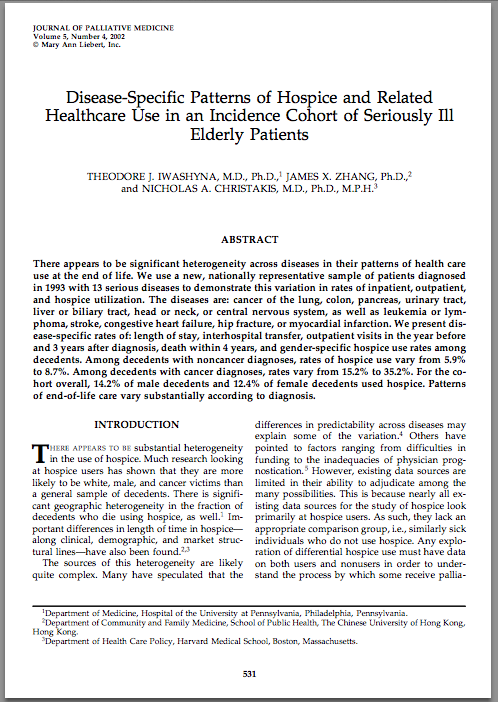
Disease-Specific Patterns of Hospice and Related Healthcare Use in an Incidence Cohort of Seriously Ill Elderly Patients
Abstract
There appears to be significant heterogeneity across diseases in their patterns of health care use at the end of life. We use a new, nationally representative sample of patients diagnosed in 1993 with 13 serious diseases to demonstrate this variation in rates of inpatient, outpatient, and hospice utilization. The diseases are: cancer of the lung, colon, pancreas, urinary tract, liver or biliary tract, head or neck, or central nervous system, as well as leukemia or lymphoma, stroke, congestive heart failure, hip fracture, or myocardial infarction. We present disease-specific rates of: length of stay, interhospital transfer, outpatient visits in the year before and 3 years after diagnosis, death within 4 years, and gender-specific hospice use rates among decedents. Among decedents with noncancer diagnoses, rates of hospice use vary from 5.9% to 8.7%. Among decedents with cancer diagnoses, rates vary from 15.2% to 35.2%. For the cohort overall, 14.2% of male decedents and 12.4% of female decedents used hospice. Patterns of end-of-life care vary substantially according to diagnosis.
Citation:
T.J. Iwashyna, J.X. Zhang, and N.A. Christakis, "Disease-Specific Patterns of Hospice and Related Healthcare Use in an Incidence Cohort of Seriously Ill Elderly Patients" Journal of Palliative Medicine, 5(4): 531-538 (August 2002)